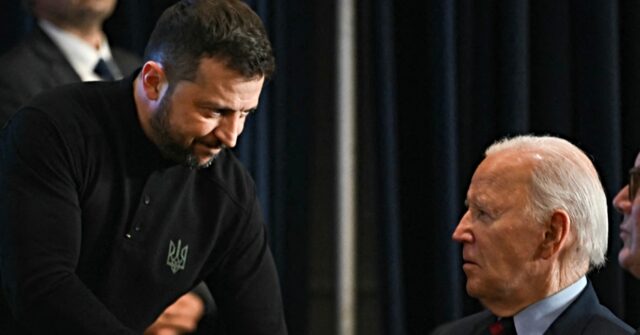On a pivotal Tuesday, the United States confirmed a significant financial assistance package for Ukraine amounting to $20 billion, drawing from proceeds generated from frozen Russian assets. This financial commitment is a part of a larger $50 billion support initiative spearheaded by the G7 nations, coinciding with President Joe Biden’s impending departure from the White House in just 40 days. This infusion of funds arrives at a crucial point for Kyiv, as the upcoming administration under President-elect Donald Trump has already signaled a desire to prioritize negotiations and settlements between Ukraine and Russia, raising concerns about the future of U.S. support for Ukraine amidst ongoing conflict.
Trump has vocalized skepticism regarding the scale of financial support directed toward Ukraine since Russia’s aggressive invasion in 2022. Over the weekend, he suggested the possibility of reducing aid to Kyiv, emphasizing a more cautious approach toward foreign intervention. In stark contrast, U.S. Treasury Secretary Janet Yellen framed the latest tranche of aid as essential for bolstering Ukraine’s defense capabilities during this severe and unprovoked aggression from Russia. Yellen asserted that the funds, derived from immobilized Russian assets, will deliver vital support enabling Ukraine to sustain its emergency services, healthcare systems, and other crucial resistance infrastructures.
The recent disbursement has been met with deep appreciation from Ukrainian President Volodymyr Zelensky, who expressed gratitude for this financial assistance, deeming it a “powerful act of justice.” In his articulation of the aid’s significance, Zelensky underscored its role in reinforcing Ukraine’s defense mechanisms, helping to safeguard national sovereignty, and protecting the populace from ongoing hostilities. The context of this support highlights the broader geopolitical struggle, as Ukraine strives to maintain resistance against the relentless onslaught from Russian forces.
Notably, the U.S. Treasury reported that it has already allocated the $20 billion to the World Bank, which facilitates the distribution of funds to Ukraine through an established channel. This strategic utilization of financial resources is significant, especially considering the critical state of affairs on the ground in Ukraine, where there have been recent territorial losses for Ukrainian forces. The challenges faced by Kyiv have been compounded by Russia’s advancements, particularly in eastern Ukraine, as well as activities in the Kursk region, demonstrating an increasingly dire battlefield scenario for Ukraine.
The situation paints a grim picture as Ukrainian troops have relayed concerning reports from the front lines, indicating the stark realities of the war. While the incoming administration’s stance may indicate an impending shift in U.S. foreign policy towards Ukraine, the current support package reflects a dedication to sustaining Ukraine’s capacity to resist and defend against external aggression. The commitment from the G7 and the U.S. serves as a critical lifeline for Ukraine during this turbulent period, emphasizing the international community’s stance against unprovoked military aggression.
In summary, the confirmed release of $20 billion in aid to Ukraine, funded by frozen Russian assets, illustrates the ongoing complexities surrounding the conflict and international relations. As political dynamics shift within the U.S. with Trump’s promises of potential cuts in aid, the current administration is striving to provide essential support to Ukraine’s fight for sovereignty. This funding not only aims to bolster military defenses but also to assist in maintaining civil services amid a challenging and ever-evolving war landscape, reaffirming the United States’ commitment to a just response against foreign aggression.

